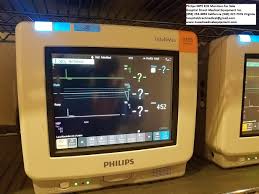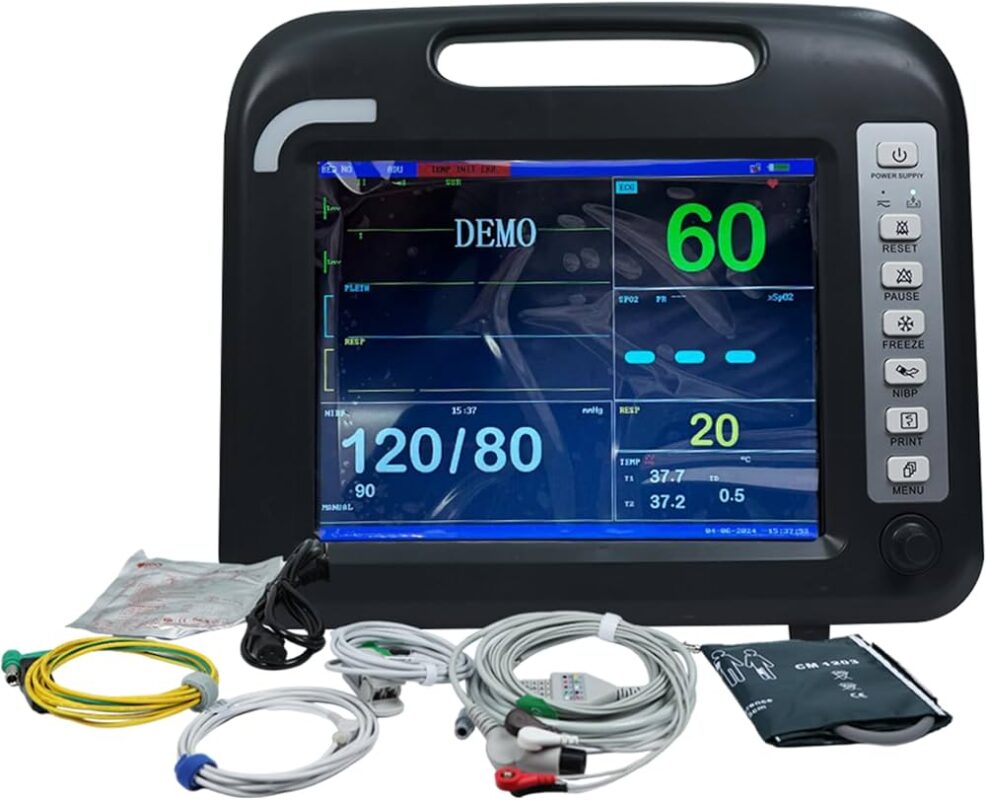AED's
Buying AED Refurbished Monitors for Cardiac Devices
When considering purchasing refurbished monitors for cardiac devices—especially Automated External Defibrillators (AEDs) and associated monitoring systems—it’s essential to approach the decision with both diligence and a clear understanding of the market, technical requirements, and risk/benefit balance. The global cardiac-monitoring products market is projected to grow from about USD 25.1 billion in 2023 to USD 42.2 billion by 2033, at a CAGR of around 5.3 %. Allied Market Research Against that backdrop, refurbished equipment may offer cost savings—but only if selected, evaluated, installed and maintained properly. Below is a detailed, descriptive guide to buying refurbished monitors for cardiac devices.
Why Consider Refurbished Monitors?
There are compelling reasons why institutions—hospitals, clinics, EMS providers, even large workplaces or public-access venues—look into refurbished monitors for AEDs and cardiac-monitoring systems:

1. Cost savings:
New equipment can be expensive, especially for lower-budget facilities or for deployment in secondary sites (satellite clinics, community centres, etc.). Refurbished offers can reduce the initial capital outlay.
2. Faster deployment:
Sometimes refurbished units are available more quickly than new models, especially when lead-times for new production are long, or when procurement budgets are tight.
3. Adequate for many use-cases:
For many sites that don’t require the absolute latest top-tier monitors, a well-refurbished unit may meet performance standards at lower cost.
4. Sustainability and reuse:
Reusing equipment extends the useful life and can be more environmentally efficient than disposing of units after only limited use.
5. Support for expanding monitoring access:
With growth in remote patient monitoring and broader access to cardiac-monitoring technologies, institutions may want to scale faster—and refurbished equipment can help bridge that.
However, these benefits come with caveats—refurbished devices require careful vetting, support, quality assurance and clear policies around warranty, maintenance, life-cycle and compliance.
Key Considerations Before Purchasing
When you target refurbished monitors for AEDs or other cardiac devices, you must evaluate a number of critical dimensions:
Source and refurbishment quality
- Vendor credibility: Ensure you’re buying from a vendor experienced in refurbishing medical-device equipment. They should follow standard refurbishment protocols—cleaning, testing, replacement of consumables (e.g., electrodes, batteries), updating software/firmware, and verifying self-tests and calibrations. For example, an article on refurbished AED monitors emphasizes that “Any refurbished AED monitor must be tested and certified to ensure it provides real CPR help when it’s needed.”
- Refurbishment process transparency: Ask for documentation of what was done—what parts were replaced, how the device was tested, results of functional tests, battery cycle history (if battery-powered), software version, life remaining of key components.
- Compliance and safety checks: Ensure the refurbishment includes verification that the unit meets applicable standards (medical device safety standards and regulatory acceptance in your jurisdiction).
- Warranty/service support: Does the vendor offer a warranty on the refurbished unit? Is there technical support or a service contract available? A refurbished unit without backup service can become a liability.
B) Technical suitability and life-cycle
- Device lifespan: Refurbished units have already been used. You need to understand how much life remains in key components (battery, capacitors, sensors).
- Software/firmware version: For cardiac monitors/AEDs, software may impact functionality (self-tests, algorithm updates). If the firmware is outdated and cannot be upgraded, it may limit performance or regulatory compliance.
- Consumables and accessories: Ensure new or nearly-new consumables (pads, electrodes, chargers, cables) are included or readily available. For an AED, for example, electrode pads and battery are consumables that must function reliably under an emergency.
- Calibration and testing history: For monitors, ECG accuracy, display clarity, alarm functionality and connectivity (if applicable) must be validated. Ask for test logs.
- Regulatory/approval compliance in your region: Some refurbished devices may have been approved for use in other jurisdictions; you must verify that they meet local regulatory requirements (e.g., your country’s medical-device regulations) and that refurbishing did not void legal status.
- Future servicing and spare parts: Older models may become difficult to maintain because parts are no longer manufactured; check availability of spares for the model you buy.
C) Risk assessment
- Reliability in critical situations: Cardiac-monitoring, AED use—and devices that monitor or intervene in life-threatening cardiac events—leave no margin for failure. A refurbished unit must meet the same reliability standard as new.
- Hidden costs: Lower upfront cost can mask higher servicing, downtime, or shorter useful life. If the battery dies sooner or the monitor requires more frequent calibration, the total cost may approach that of a new device.
- Warranty risk: A short or non-existent warranty increases risk. If a refurbished AED monitor fails during a critical event, the consequences (patient safety + liability) are large.
- Liability and compliance: If a device fails because it was refurbished improperly, who is responsible? Ensure the vendor assumes responsibility and has documentation.
- Technology obsolescence: If your organization intends to use the monitor for many years, consider whether a slightly newer model (even if more expensive) might offer better longevity and features (connectivity, remote monitoring, integration).
D) Budgeting & procurement strategy
- Total cost of ownership (TCO): Factor in not only purchase cost, but servicing, spare parts, consumables, expected lifespan, certifications, user training, installation/configuration.
- Refurbished vs. new comparison: Always compare refurbished quote vs new device quote, assessing features, service contract, warranty, expected lifespan. The difference may or may not justify refurbished.
- Standardization and interoperability: If the institution has existing monitors/AEDs, it may make sense to standardize models (even if new) for easier servicing, training, spare part stocking. A different refurbished model may increase complexity.
Fund allocation: Some institutions prefer to allocate refurbished equipment to secondary/low-risk settings (satellite clinics, remote sites, training labs) and keep new devices for primary emergency zones.
3. Practical Steps & Checklist for Buying Refurbished Monitors
Here’s a practical roadmap you can follow to structure your procurement process:
- Define requirements
- What type of monitor or AED do you need? (For example: a monitor that attaches to the AED to display ECG and monitor vital signs; or an AED with built-in monitor and defibrillation capability.)
- What features are essential? (ECG leads, BP monitoring, SpO2, waveform display, remote connectivity, integration with central monitoring, battery life, ambulance-rated vs clinic-rated).
- What environment will it be used in? (Hospital ICU, ambulance, clinic, public access, workplace).
- What budget and service contract allocation do you have?
- What lifespan do you require? (E.g., must serve 5 years minimum).
- What type of monitor or AED do you need? (For example: a monitor that attaches to the AED to display ECG and monitor vital signs; or an AED with built-in monitor and defibrillation capability.)
- Market scan of vendors
- Identify vendors specializing in refurbished medical-equipment, particularly cardiac monitors and AEDs.
- Check their accreditation, refurbishing protocol, references, warranty offerings.
- Ask for documentation of refurbishment, component replacements, certifications, test logs.
- Identify vendors specializing in refurbished medical-equipment, particularly cardiac monitors and AEDs.
- Shortlist models
- Choose models compatible with your existing equipment or infrastructure, if relevant.
- Ensure spare parts, service manuals and consumables are available locally or via vendor.
- Consider manufacturer’s original models (even if older) rather than obscure models that might lack support.
- Choose models compatible with your existing equipment or infrastructure, if relevant.
- Request detailed offer and documentation
- Ask for: serial number, age of unit, usage history (if available), refurbishment report (what was replaced/tested), battery recharge cycles, software version.
- Confirm warranty period, support/service contract terms, availability of spare parts.
- Confirm return policy or exchange policy if unit fails early.
- Confirm shipping/logistics, installation, calibration requirement, training for users.
- Ask for: serial number, age of unit, usage history (if available), refurbishment report (what was replaced/tested), battery recharge cycles, software version.
- Technical evaluation prior to acceptance
- Upon delivery, inspect unit physically: no damage, clear display, readable labels, updated software, new pads/consumables (for AEDs).
- Run self-tests and functional tests: For an AED, ensure self-test passes, battery holds charge, pads are within expiry; for a monitor, test ECG leads, verify alarm, BP/SpO2 if included, ensure correct reading calibration.
- Verify documentation: calibration certificate, test logs, refurbishment report.
- Upon delivery, inspect unit physically: no damage, clear display, readable labels, updated software, new pads/consumables (for AEDs).
- Installation, training and integration
- Install the device per manufacturer/refurbisher instructions. For monitors, integrate with network if applicable.
- Provide user training: how to operate, what limits to expect, how to inspect regularly, when to call for service.
- Establish routine maintenance schedule: battery checks, consumables replacement, update software/firmware as needed.
- Install the device per manufacturer/refurbisher instructions. For monitors, integrate with network if applicable.
- Ongoing monitoring & maintenance
- Log usage, downtime, any faults or repairs.
- Monitor consumable life (pads, batteries) and plan replacement ahead of expiry.
- Ensure service contract remains active or that spare parts remain available.
- At end of useful life, plan replacement—don’t wait until device fails in an emergency.
- Log usage, downtime, any faults or repairs.
4. Special Considerations for AED-Monitors in Cardiac Device Context
When the refurbished monitor is specifically tied to a cardiac device scenario—such as an AED monitor used for defibrillation, or a cardiac-monitoring device used in conjunction with cardiac implantables—there are additional layers of scrutiny needed.
- Rapid response reliability: In cardiac arrest situations, every minute counts. The chance of survival drops by 7–10 % for each minute without a shock and return of normal rhythm. Penn Care, Inc. That means the AED monitor must be ready to perform reliably at that urgent moment.
- Integration with emergency response systems: If your institution uses monitors that communicate with dispatch, central monitoring, telemetry, or integrate into ambulance systems, refurbished units must support the connectivity protocols and interoperability required.
- Battery readiness and self-test automation: For AED monitors, self-tests and readiness checks are critical. A refurbished unit must have a strong battery and pass self tests regularly; it cannot be someone’s cast-off with uncertain status.
- Consumables expiry and readiness: In AED usage, electrode pads, battery, and sometimes defibrillation cartridges must be replaced periodically. If these are near expiry or unavailable, the value of the refurbished monitor drops dramatically.
- Software-algorithm currency: The defibrillation algorithm, ECG interpretation, warnings, data storage (event logs) may require recent software. A refurbished unit with outdated firmware may not be acceptable for modern standards of care.
- Regulatory compliance and liability: Using refurbished monitors in high-risk cardiac settings raises regulatory and liability considerations. Has the refurbishment been done according to standards? Is the unit certified for medical-emergency use in your country? What happens if the device fails—who is accountable?
5. Operational & Life-Cycle Planning
Once you’ve selected and deployed a refurbished monitor, planning for its operational life-cycle is crucial to get the full benefit.
A) Maintenance plan
- Set up routine inspections: battery status, pad expiry, self-test logs.
- Schedule full calibration annually (or per manufacturer/refurbisher recommendations).
- Maintain a spare parts inventory for key consumables (pads, batteries, charger cables).
- Track total usage hours or shocks delivered (for AEDs) to estimate remaining useful life.
B) End-of-life (EOL) planning
- Set a predetermined replacement threshold: for example, after 5 years or after a fixed number of uses/shocks.
- Monitor obsolescence: If the vendor discontinues service or parts for the model you picked, you need to replace before it becomes non-serviceable.
- Budget for replacement: Even refurbished units eventually reach the end of their useful service; include replacement cost in your budgets.
- Consider “graceful degradation”: As the unit ages, you may shift it from primary emergency use to secondary or training use, and reserve newer units for high-risk zones.
C) Risk management
- Maintain documentation of each device: purchase, refurbishment report, service logs.
- Train staff in how to check the device readiness daily/weekly.
- Set up protocols for what to do if device fails or shows warning: backup unit, immediate servicing, fallback plan.
- Ensure insurance/liability coverage accounts for use of refurbished devices in critical settings.
6. When to Opt for New Instead of Refurbished
Refurbished devices are not always the right choice. Consider opting for new equipment when:
- The device will be the primary monitor/AED in a high-risk setting (emergency/ICU/ambulance) where downtime is unacceptable.
- The procurement budget allows new-unit investment and service contract without strain, and you expect long life (8–10 years) or high usage.
- The older model (refurbished) lacks connectivity/integration features your system requires (telemetry, remote monitoring, data export).
- The vendor for the refurbished unit cannot guarantee parts/service beyond a short window, or the battery/consumables life left is minimal.
- Regulatory or institutional policy mandates new equipment for certain critical functions or insurability.
Conclusion
In summary: the global market for cardiac-monitoring products is growing strongly—to USD 42.2 billion by 2033. By tapping into refurbished monitors for AEDs and cardiac devices, institutions can realize cost savings and expand access—but only if the acquisition is planned carefully. Strong vendor due diligence, technical evaluation, life-cycle and servicing plans, and risk mitigation are non-negotiable. Treat a refurbished unit as a full medical-device purchase: inspect the device, validate performance, plan for maintenance, and budget for eventual replacement.
For your institution (especially if you are based in Pakistan or another emerging-market region), additional local considerations include import logistics, device compatibility with local infrastructure (voltage, battery types, consumable availability), regulatory conformity (medical device registration), and service availability in your country or region.






